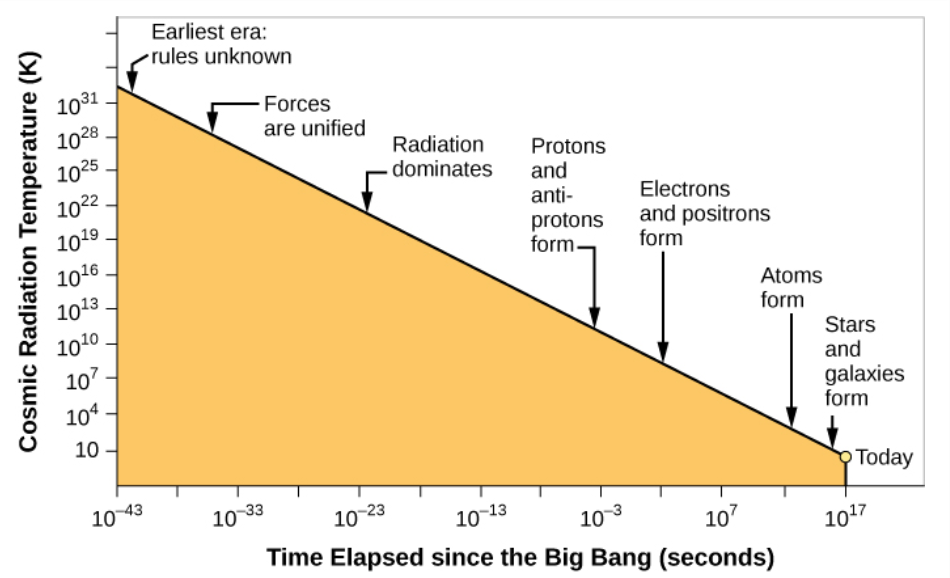chapter 29.1 the age of the universe 29.2 model of the universe & 29.3 beginning of the universe
1/11
There's no tags or description
Looks like no tags are added yet.
Name | Mastery | Learn | Test | Matching | Spaced |
|---|
No study sessions yet.
12 Terms
expansion of the universe
is accelerating
keeps galaxies from colliding
dark energy: the source of acceleration of the expansion of the universe
must be homogenous and isotropic as the universe is, thus the expansion rate must be the same everywhere during any epoch of cosmic time
began everywhere at once
cosmic expansion causes the universe to undergo a uniform change in scale over time
beginning of the universe
when all the matter we find today was once concentrated in an infinitesimally small volume
Big Bang
the explosion of the infinitesimally small volume of all matter at the beginning of time
age of universe
13.8 billion years old, with an uncertainty of about 100 million years
critical density
the mass per unit volume that will be just enough to slow the expansion to 0 at sometime infinitely far into the future
if the actual density of the universe is higher than this critical density, then the expansion will ultimately reverse and the universe will begin to contract
if the actual density is lower, then the universe will expand forever
closed universe model
actual density is higher than the critical density and there is no dark energy
universe will stop expanding at some time in the future and begin contracting
universe in imploding on itself
open universe
density of the universe is less than the critical density
universe expands forever
universe is thus infinite, time and space have no end
empty universe and coasting universe
neither gravity nor dark energy is important enough to affect the expansion rate, which is therefore constant throughout time
average density of matter in space estimate
1-2 × 10^-27 kg/m³ (10-20% of critical threshold)
first few minutes of the big bang
In the first fraction of a second, the universe was unimaginably hot.
By the time 0.01 second had elapsed, the temperature had dropped to 100 billion (1011) K.
After about 3 minutes, it had fallen to about 1 billion (109) K, still some 70 times hotter than the interior of the Sun.
After a few hundred thousand years, the temperature was down to a mere 3000 K, and the universe has continued to cool since that time.

so hot that it contained mostly radiation and not the matter we see today
the photons that filled the universe could collide and produce material particles; energy could turn into matter and vice versa
the hotter the universe was, the more energetic were the photons available to make matter and antimatter
To take a specific example, at a temperature of 6 billion (6 × 109) K, the collision of two typical photons can create an electron and its antimatter counterpart, a positron. If the temperature exceeds 1014 K, much more massive protons and antiprotons can be created.

evolution of early universe
by the time universe was 0.01 second old, it consisted of a soup of matter and radiation
matter included: protons, neutrons
each particle rapidly collided with others
temperature no longer high enough to allow colliding photos to produce neutrons or protons, but it was sufficient for the production of electrons and positrons
subatomic particles that would play a role as dark matter
all particles jiggled about on their own; universe was too hot for protons and neutrons to combine to form nuclei of atoms


formation of atomic nuclei in the early universe
3 minutes old, temperature about 900 million K
protons and neutrons could combine
deuterium lasted long enough that collisions could convert some of it into helium
estimated that 10 times more helium formed in the first 4 minutes of the universe than in all the generations of stars during the succeeding 10-15 billion years
little bits of lithium could also form
by 4 minutes, helium was having trouble forming, because the temperature dropped